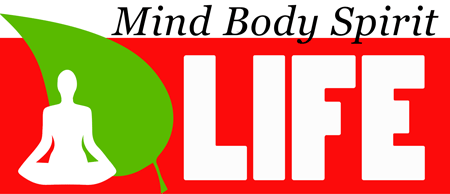Lucid Dreaming for Healing – 5 Ways to Process Trauma

There is a hidden temple in the psyche, and many never enter it; not because it’s locked, but because they’ve forgotten how to find the door. That temple is the dreamspace. And for those of us devoted to radical healing, personal truth, and deep spiritual reclamation, lucid dreaming becomes more than a novelty; it becomes sacred medicine.
I have long understood that consciousness does not reside solely in the waking world. My healing journey, and that of many clients I’ve guided, has been made possible not only through talk therapy, plant medicines, or erotic embodiment, but through intentional dreamwork. In particular, lucid dreaming has emerged as a powerful tool to process trauma, explore shadow material, and even receive clarity from the soul’s own language.
What Is Lucid Dreaming?
Lucid dreaming occurs when the dreamer becomes aware they are dreaming while still inside the dream. This awareness allows for agency; within the infinite fluidity of the dream world. You are both creator and participant, witness and healer. Unlike typical dreams, where we are often passive observers, lucid dreams open the possibility to interact with symbols, confront fears, and rewrite psychic scripts. This is dreamwork on purpose.
Why It Matters for Healing
Trauma, whether acute or complex, often creates disconnection, between the body and mind, between memory and meaning, and between self and spirit. Traditional talk therapy can sometimes only go so far, especially when the trauma is preverbal, repressed, or deeply somatic. Lucid dreaming bypasses the linear logic of the conscious mind and taps directly into the subconscious terrain where trauma is stored; not as a story, but as sensation, image, archetype, and energy.
In a lucid dream state, the protective walls of the ego soften, and what emerges is raw, unfiltered truth. The trauma might present itself as a landscape, a recurring figure, or a symbolic event. And instead of running or freezing, you can stay. You can speak. You can heal.

How Lucid Dreaming Helps Process Trauma:
1. Safe Exposure
In the lucid state, traumatic memories or symbols can be revisited safely. The dreamer can observe without being overwhelmed, re-experiencing difficult emotions in manageable doses.
2. Symbolic Resolution
Dreams are symbolic by nature. That means the psyche presents its pain not always as it happened, but in metaphor. Fighting off a shadow creature may be your soul’s way of confronting an abusive past. Lucidity gives you the chance to rewrite the ending; empowering you, liberating you.
3. Dialogue with Inner Parts
Lucid dreaming allows direct communication with dream characters, many of whom represent aspects of your psyche. You can talk to your inner child. You can ask a dark figure why it’s chasing you. You can even embody the “villain” to explore its perspective and meaning.
4. Reconnection with the Body
While the body sleeps, it remembers. Lucid dreamwork can gently guide you to explore bodily sensations, unresolved physical trauma, or stored grief that needs to be released. It can also offer sexual healing in profoundly symbolic or sacred ways.
5. Creative Rewriting of the Psyche’s Narrative
Many trauma survivors are caught in an unending loop of internal repetition. Lucid dreaming offers an exit route. You can create new endings, new beginnings; new beliefs. You can literally dream yourself free.
Cultivating Lucid Dreams for Healing
This isn’t just for mystics or monks. Anyone can access this state with practice and intention. Here’s how:
- Dream Journaling: Begin by recording dreams daily. This boosts recall and helps you notice patterns and symbols that recur.
- Reality Checks: Throughout the day, ask yourself “Am I dreaming?” Look at your hands, a clock, or a mirror; dream signs often distort these.
- Set Intentions Before Sleep: Use affirmations like “I will know when I am dreaming” or “Tonight, I will heal through my dreams.”
- Mindfulness Meditation: The more aware you are in waking life, the easier it becomes to remain aware in dream states.
- Wake-Back-to-Bed Technique: Wake up after 4–6 hours of sleep, stay up for 20–30 minutes, then return to bed. This increases your chances of entering REM sleep consciously.

A Personal Note from the Dreamscape
I’ve walked through fire in dreams; literal and metaphorical. I’ve wept in the arms of my younger self. I’ve stood naked in the void and received ancient truths that didn’t come from books, but from the marrow of memory. I’ve even encountered dream-guides who offered healing not through words, but through energy, presence, and awakening.
Sometimes I wake up with tears soaking my pillow. Other times, I wake with laughter, release, or the sweet soreness of having faced it; whatever “it” was. That’s the power of lucid dreaming. That’s what’s possible when you stop ignoring your nights.
Final Thoughts
Lucid dreaming is not escapism. It is sacred return. A return to the parts of us left behind. A return to the truth beneath trauma. A return to wholeness.
As a Sexologist and Homeopathic Psychologist, I offer this not as a cure-all by any means, but as a profoundly intimate, wildly personal, and radically empowering path of healing. You don’t need to escape into your dreams, you need to enter them. Fully. Consciously. With reverence.
And in doing so, you may find that the temple you were seeking was never out there. It was inside you, waiting patiently… behind your eyelids.




Leave a comment